Okanagana vanduzeei is a species of cicada in the family Cicadidae. It is found in Central America and North America.
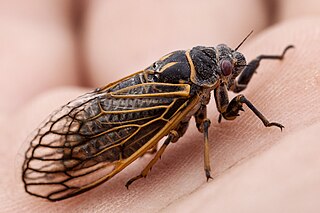
Okanagana synodica, the walking cicada, is a species of cicada in the family Cicadidae. It is found in North America.
Pacarina is a genus of cicadas in the family Cicadidae. There are at least four described species in Pacarina.

Okanagana is a genus of cicadas in the family Cicadidae. There are at least 60 described species in Okanagana.
Cacama carbonaria is a species of cicada in the family Cicadidae. It is found in Central America.

Cacama is a genus of cactus dodgers in the family Cicadidae. There are about 12 described species in Cacama.
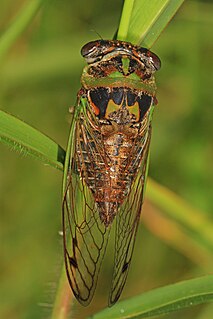
Neotibicen davisi, known generally as the Davis' southeastern dog-day cicada or southern dog-day cicada, is a species of cicada in the family Cicadidae.
Miranha is a genus of cicadas in the family Cicadidae. There is at least one described species in Miranha, M. imbellis.
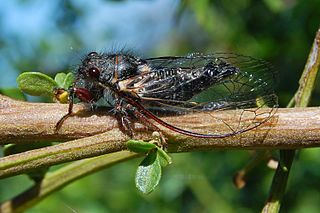
Tibicininae is a subfamily of cicadas in the family Cicadidae. There are 5 tribes and at least 140 described species in Tibicininae. They are found in the Neotropics, the Nearctic, and the Palearctic.

Cicadatrini is a tribe of cicadas in the family Cicadidae. There are about 12 genera and at least 120 described species in Cicadatrini.

Cicadettini is a tribe of cicadas in the family Cicadidae. There are at least 110 genera and 520 described species in Cicadettini, found worldwide except for the Neotropics.
Hemidictyini is a tribe of cicadas in the family Cicadidae, found in the Neotropics and tropical Africa. There are at least two genera and two described species in Hemidictyini.
Pictilini is a tribe of cicadas in the family Cicadidae, found in Australia. There are at least two genera and two described species in Pictilini.
Prasiini is a tribe of cicadas in the family Cicadidae. There are about 9 genera and at least 50 described species in Prasiini, found in tropical Africa, Australasia, and the Neotropics.
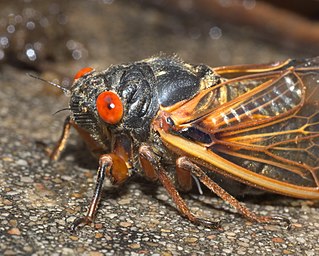
Taphurini is a tribe of cicadas in the family Cicadidae, found in the neotropics. There are about 14 genera and at least 60 described species in Taphurini.
Arenopsaltriini is a tribe of cicadas in the family Cicadidae, found in Australia. There are at least two genera and about seven described species in Arenopsaltriini.
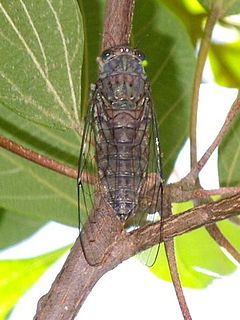
Leptopsaltriini is a tribe of cicadas in the family Cicadidae. There are at least 20 genera and 190 described species in Leptopsaltriini, found in the Palearctic, Nearctic, and Indomalaya.

Macrotristriini is a tribe of cicadas in the family Cicadidae. There are at least 2 genera and 20 described species in Macrotristriini, all found in Australia.
Oncotympanini is a tribe of cicadas in the family Cicadidae, found in China and southeast Asia. There are at least 3 genera and about 12 described species in Oncotympanini.
Tibicinini is a tribe of cicadas in the family Cicadidae. There are about 8 genera and at least 100 described species in Tibicinini, found in the Holarctic.









